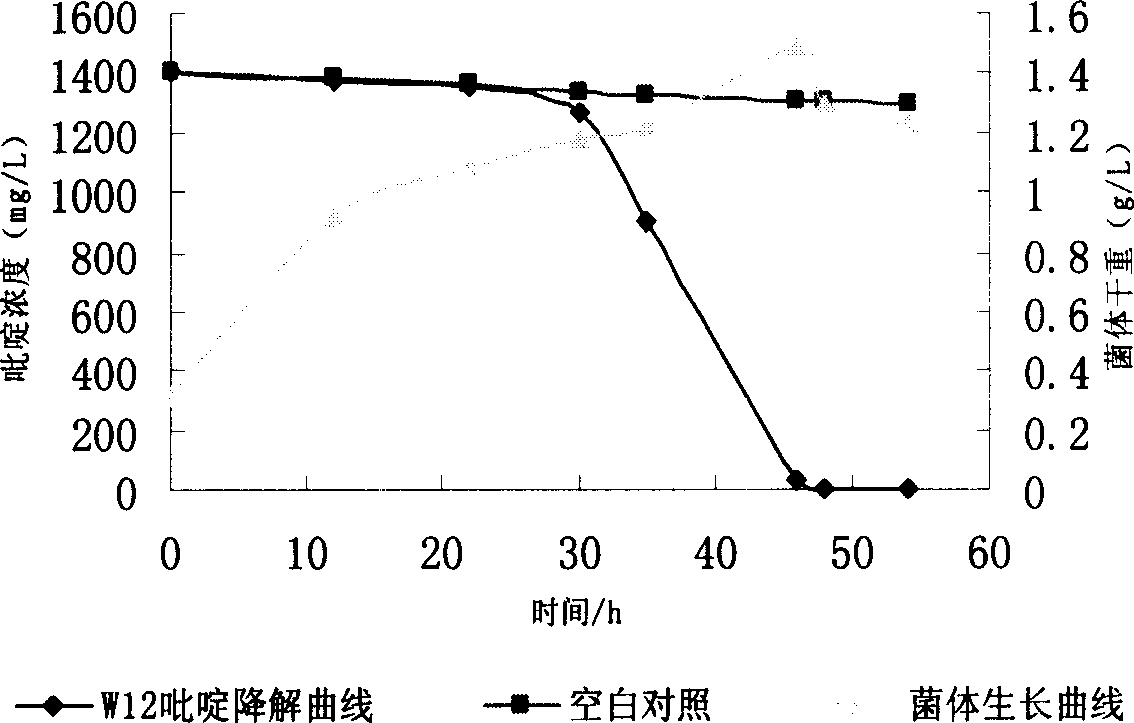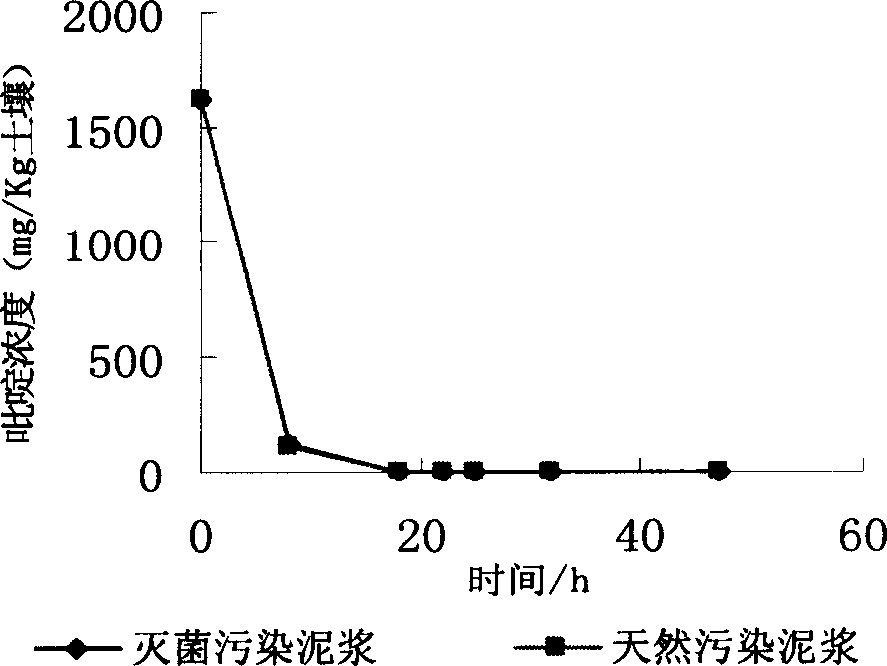A strain denitrogen paracoccus and its culturing method and application
A technology for denitrifying paracoccus and its cultivation method, which is applied in the field of denitrifying paracoccus and its cultivation, and can solve problems such as pollution and the difficulty of effective treatment of "three wastes"
- Summary
- Abstract
- Description
- Claims
- Application Information
AI Technical Summary
Problems solved by technology
Method used
Image
Examples
Embodiment 1
[0030] Example 1. Isolation and purification of Paracoccus denitrificans W12 CGMCC No.1673
[0031] Paracoccus denitrificans W12 is a G-bacterium isolated and purified from the activated sludge cultivated by the Department of Environmental Engineering of Tsinghua University using toxic and harmful industrial wastewater for long-term domestication. The specific enrichment, separation and purification process as follows:
[0032] Under the condition of selection pressure of 2000 mg / L pyridine, that is, using pyridine as the only carbon and nitrogen source, Paracoccus denitrificans was obtained from the activated sludge domesticated for a long time through enrichment, separation, screening, purification and other steps. ) W12 CGMCC No. 1673.
[0033] The specific separation process is as follows: Inoculate the collected samples into a shaker flask containing liquid BS pyridine selection medium (add 2000 mg / L pyridine as the only carbon source and nitrogen source in BS inorganic ...
Embodiment 2
[0034] Example 2, Pollutant Degradation Spectrum and Resistance Spectrum of Paracoccus denitrificans W12 CGMCC No.1673
[0035] 1) Pollutant degradation spectrum of Paracoccus denitrificans W12 CGMCC No.1673
[0036] The BS inorganic salt medium was used as the basic medium, and the organic pollutants shown in Table 1 were used as the only added energy, carbon source, and nitrogen source. It was cultured in a solid state at 30°C for one week, and the colony formation was observed. Condition. The test results of benzene, phenol, toluene, xylene, pyridine, cyanide, quinoline, imidazole and other compounds are shown in Table 1. The results showed that Paracoccus denitrificans (Paracoccus denitrificans) W12 CGMCC No.1673 had a broad degradation spectrum and could grow by using a variety of organic pollutants, especially for pyridine.
[0037] pyridine
benzene
CN -
concentration
1.96g / L...
Embodiment 3
[0044] Example 3, Biodegradation of Pollutants by Paracoccus denitrificans W12 CGMCC No.1673
[0045] 1) Biodegradation of pyridine-contaminated wastewater by Paracoccus denitrificans W12 CGMCC No.1673
[0046] Pick 2-ring denitrificans paracoccus (Paracoccus denitrificans) W12 CGMCC No.1673 bacteria from the slope and inoculate them in a 300ml Erlenmeyer flask containing 50ml LB liquid medium, culture at 35°C with shaking at 180rpm for 36h, centrifuge at 8000rpm for 10min to collect the bacteria, and then The bacteria solution was washed with sterile physiological saline, and then centrifuged, and this was repeated twice, and the centrifugation condition was also 8000 rpm for 10 min. Finally, the obtained bacterium was resuspended with BS culture solution added with pyridine, and inserted into a 300ml Erlenmeyer flask containing 50ml of waste water with pyridine. The concentration of pyridine was about 50mg / l, 100mg / l, 200mg / l, 400mg / l l, 900mg / l, 1400mg / l; 35°C, 150rpm, for...
PUM
 Login to View More
Login to View More Abstract
Description
Claims
Application Information
 Login to View More
Login to View More - R&D
- Intellectual Property
- Life Sciences
- Materials
- Tech Scout
- Unparalleled Data Quality
- Higher Quality Content
- 60% Fewer Hallucinations
Browse by: Latest US Patents, China's latest patents, Technical Efficacy Thesaurus, Application Domain, Technology Topic, Popular Technical Reports.
© 2025 PatSnap. All rights reserved.Legal|Privacy policy|Modern Slavery Act Transparency Statement|Sitemap|About US| Contact US: help@patsnap.com



